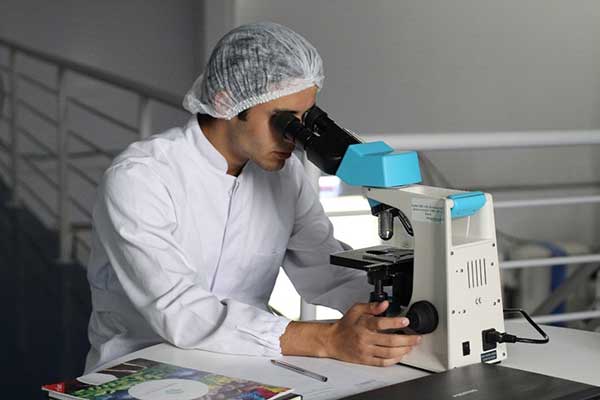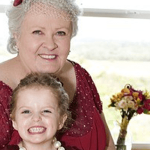“Think of it: a disability is usually defined in terms of what is missing. … But autism … is as much about what is abundant as what is missing, an over-expression of the very traits that make our species unique,” – Paul Collins, ‘Not Even Wrong: Adventures in Autism’

Autism (autistic spectrum disorder, or ASD) is a condition which most of us are now broadly aware of. Having said that, is only in the last couple of decades that it has become widely recognised and accepted. Although the word ‘autism’ was first used over 70 years ago, it is only in the last 20 or so years that significant efforts have been put into researching it, understanding it, dealing with it and raising awareness for it.
In a world where the ‘experts’ are constantly discovering new things about autism, it is extremely tricky for the rest of us to fully understand it and to recognise it in others. It is really important to diagnose autism in children as early as possible, so that their needs can be met appropriately throughout their formative years.
How to spot it in children, though? The fact is that the autistic spectrum is extremely wide and varied, meaning that those who have it display a wide range of behaviours. However, there are inherent signs to watch out for, and a plethora of resources, support systems and institutions available to ensure that those children are allowed to develop and succeed; to meet their full potential.
If you want to learn in-depth information about the causes of autism and how to deal with it in both children and adults, then we, at NCC Home Learning, have many autism awareness courses available. However, in the meantime we hope to answer any questions or curiosities you might have about how to spot signs of autism in children, and how to support them going forward in the article that follows!
What Is Autism?
Let’s start at the beginning, shall we? So, in a nutshell, what is autism?
Autism, or to give its full name ‘Autism Spectrum Disorder (ASD)’ is characterised by a range of challenges around social skills, communication (both verbal and non-verbal) and repetitive behaviours.
Autism, however, is just the blanket term used for a variety of sub-types of the condition. Each of these sub-types displays its own behaviours and challenges. But, as with all people on the planet, each case of autism is unique to the person in question and has its own subtle differences.
The reason that the autistic range is so wide is that, although the genesis of the condition is generally biological, the development of the disorder as the person grows older is very much down to the influence of environmental factors. Behaviours change and develop constantly based on the environmental stimuli experienced by the individual.
Autism can be very manageable, and many who suffer from it don’t discover they are on the spectrum until much later on in life, so insignificant is it to their quality of life. However, on the other end of the scale, it can be extremely tricky to live with and often comes with medical issues such as seizures, obsessive compulsive disorder (OCD), anxiety and depression, sleeping issues and gastrointestinal disorders. Another common affliction with Autism is sensory issues; an aversion to, or obsession with, certain sights, sounds, textures, tastes and smells.
We do not think of autism as particularly common, as it is not generally something we can see. Also, people who suffer at the severe behavioural and medical end of the spectrum struggle to enjoy or deal with public environments. Autism is just something that we don’t see that often, but it is more common than you might think. In fact, it effects around 1 in every 60 children. The tell tale signs of Autism normally appear by the time a child is 3 years old and can be diagnosed as early as 12 months.
What Causes Autism?
Unfortunately, there is no finite answer to this question. Scientists and researchers have been looking at this for over 70 years, yet they are still largely uncertain about what specifically causes the brain to develop so differently. The current general consensus is that the condition develops in children due to a combination of factors; genetic, biological and environmental.

Genetic. There is no evidence to suggest that this is the most significant factor in the development of Autism. However, some specific genetic situations have been firmly linked to it. For example, in a family that has one autistic child, the chance of having another child with the disorder is around 5%. This is quite high compared to the chances within the rest of the population. It has also been found that autistic children are more likely to be born into families where the parents have mild social impairments (repetitive behaviour, for example) or mental disorders such as depression.
Biological. There is significant evidence to suggest that most autistic people will have been subjected to too much testosterone in the womb. Also, around half of autistic people have gut problems such as diarrhoea, constipation and IBS. This imbalance in the bacteria present in the gut is also a potential catalyst for the development of ASD.
Environmental. This can refer to conditions suffered by the mother during pregnancy. This includes some illnesses, chemical exposures or traumas experienced by the mother. These can all lead to developmental or chemical imbalances in the womb. Lack of oxygen at birth is also cited as a potential player in the condition’s cause. However, it is worth stressing that none of the above factors bear sole responsibility for the development of autism. It is these things in combination with other factors that may lead to its growth.
What Is High Functioning Autism?
‘High-functioning autism’, or HFA, is probably a term you have heard thrown around, but you might not know precisely what it means. It’s actually pretty simple. A high-functioning autistic person is simply someone who suffers with the condition but also has an IQ of 70 or above. This IQ is significantly higher than the majority of autistic people.
This kind of autism looks very similar to Asperger’s syndrome and is often confused with it despite it being quite a different condition! Which leads us to…
What Is the Difference Between Autism and Asperger’s?
Autistic spectrum syndrome and Asperger’s syndrome are entirely different, but so many of their associated behaviours and symptoms are identical. These include the following…
- Struggling to express emotions or feelings clearly
- An inability to maintain eye contact
- Sensory sensitivities around tastes, textures and sounds
- Poor motor skills
- A need for consistency and clear scheduling
- Obsessions with very specific subjects and items
- Finding sustaining relationships difficult

So, as you can probably tell, to the naked eye both conditions look very much the same. However, there are many differences between the two. We hope to help you improve your Asperger’s syndrome awareness by detailing the most notable differences here…
- Children with autism, as suggested previously, have a lower than average IQ. Sufferers of Asperger’s generally have an IQ that is high above the national average. Many children with Asperger’s have extremely advanced vocabulary and have a talent for retaining and reciting facts on a specific subject. For example, they may have an encyclopaedic knowledge of the London Underground, or be able to recite episodes of their favourite TV shows, word for word! In many cases, this heightened intellect enables these children to excel, but all too often others can be prevented from reaching their potential due to behavioural setbacks.
Language Development. There is a huge difference in the speed of language acquisition between those with Asperger’s and autism, high-functioning or not. Asperger’s is often not diagnosed until later on in childhood due to the fact that there is nothing abnormal about their speech development, it is usually in line with what is considered to be normal. Those with autism, for the most part, develop speech much later than is usual. There is also a difference in the desire to communicate. Autistic children generally seem uninterested in communication with others, whereas Asperger’s children are usually eager to communicate in both verbal and non-verbal ways. This eagerness does not necessarily mean they find it easy to communicate though; they often still come off as socially awkward and struggle with eye contact.
Brain Function. As a general rule, the brains of autistic and Asperger’s children are wired differently, and each pattern is consistent with others suffering with the same condition. Children with Asperger’s tend to have stronger connections in the left side of their brain than autistic children.

Diagnosis. Autism is mostly diagnosed early as the signs make themselves quite clear during early development. The most commonly seen early indications lie in lack of social interaction, late language development and an early aptitude for very specific tasks (ordering items by colour or size, for example). Asperger’s, on the other hand, is often caught much later as the signs are not as clear early on. It is diagnosed, on average, around the age of 5; much older than the autism average, which is around 2 years old.
Asperger’s is often not recognised by parents until their children begin attempting to interact with peers. This could be as late as their teen years, or even adulthood.
Symptom Severity. Although this is not a universal rule, the symptoms of autism often present much more strongly than they present with Asperger’s. Autistic children nearly always need specific support from purpose built schools, colleges and other institutions, whereas Asperger’s sufferers generally attend, and excel within, mainstream education.
However, even considering all of this, Asperger’s is so close to high-functioning autism, that the term ‘Asperger’s’ has recently been decommissioned as an official condition. The name is sure to continue to exist in our vernacular for some time, but the disorder has mostly been taken under the wider umbrella covered by autism.
How Many People Have Autism?
Of course, it is tricky to know precisely how many people have autism, as many cases, high-functioning individuals in particular, often go undiagnosed. However, it is estimated that autism effects around 1.2% of people worldwide. In the UK there are 700,000 people somewhere on the spectrum.
According to a 2017 poll, the UK is the second in the world when it comes to the prevalence of ASD among children. The poll suggests that 94 out of every 10,000 children born in the UK are somewhere on the spectrum. First on the list is Japan, who’s statistics show that 161 children out of 10,000 have the condition, the USA are a little further down on the list, in 5th place, at 66 children per 10,000. There is no finite reason or connection between these widely varying figures.
There are arguments to suggest that autism is significantly more common than it was 20 years ago. This is certainly true of officially diagnosed cases of ASD. The official percentage for prevalence of autism in the general population was between 0.02% and 0.05% two decades ago, it is now, as stated earlier, approximately 1.2%. However, this huge rise does not reflect reality. The main reason for this rise in diagnoses is almost certainly because the criteria for diagnosing ASD has changed. Autism used to be characterised solely by a lack of ability for social interaction. In the last 20 years, the definition of autism has expanded and includes a whole range of behaviours and ailments. Add to this that autism was routinely being misdiagnosed as Asperger’s, and you have a fair explanation for the apparent rise in prevalence.
What Are the Signs of Autism?
So, how do we spot autism in our children? What should we be looking out for. Let’s break it down…
How is autism diagnosed?
If you suspect your child might be on the spectrum, you will require a number of assessments to be carried out in order for an official ASD diagnosis to be made. In short, an autism diagnosis is based on a range of features being expressed, or not, by your child. For most children, the following things will need to happen in order for a full assessment to be made…
- Evidence and information about your child’s symptoms, development, health and behaviour will be needed from a variety of people, including your GP, nursery/school staff, occupational therapists and speech and language therapists.
- A speech and language therapist will often carry out a detailed ASD assessment.
- Your child will require a detailed physical examination. This may seem intrusive but is imperative to rule out any possible physical reasons for your child’s symptoms. Common reasons for related symptoms include Down’s syndrome and neurofibromatosis.
- Appointments may be made for your child so that specific skills and activities can be looked at and evaluated.

How to Test for Autism.
The assessments listed above include a variety of thorough and specific physical and mental tests. But how to test for autism yourself? Here is a look at some of the ‘red flag’ symptoms you should be looking for…
Socialising. Social difficulties are the issues most commonly associated with ASD. There are many social symptoms that can be picked up on. These are things that autistic children regularly struggle with or misunderstand…
- Lack of ability to make eye contact with others.
- Facial expressions; how to read these in others.
- Not being able to recognise tones of voice or obvious inferences and inflexions.
- Taking everything extremely literally; a lack of understanding of nuance.
- Unable to read or understand gestures.
- Finding social situations overwhelming.
- Inability to understand personal space.
Speech. Late speech development, as discussed earlier is very much a trait of ASD. This lack of speech development can begin to show as early as 9 months old. Here are the signs that an assessment might be in order based on speech development…
- By 9 months: No sharing of sounds or expressions between parent and child.
- By 12 months: No babbling or articulated sounds, no response to their name.
- By 16 months: No or extremely few words. Most children have a rudimentary, single word, vocabulary by this point.
- By 24 months: Most children are using short sentences by this point (2-3 word phrases). If your child is not independently doing this by this point, then an assessment might be in order.
Physical and Sensory Issues. Sensory issues can go two ways. On one hand, your child may have a very intense negative reaction to a specific sound, texture, smell or sight (such as harsh light). Alternatively, they might find comfort in, or be obsessed with as certain sensory sensation; a strong liking for the smell of candles or the feel of velvet on their skin, for example.
Emotional and Behavioural Signs. Emotionally speaking, autistic children simply struggle to recognise emotions, both within themselves and in others. They also struggle to express emotion effectively, and often get frustrated. Behaviourally, there are a number of tell-tale things you should look out for…
- Repetitive movements in the body such as tapping, rocking or flapping.
- Repetitive interaction with objects such as flapping pencils, spinning wheels or pressing buttons.
- Focus on lights or moving objects.
- Obsessions with specific objects or very narrow and niche subjects.
- A huge reaction to change or deviation from routine.
If you are concerned that your child may be somewhere on the spectrum and are wondering if they should be seen by a professional, there is also quick test that you can take to help you get an idea of whether this is something you need to be seriously thinking about.
The test is a 39 question, ‘yes’ or ‘no’ questionnaire evaluation. It was developed by the Autism Research Centre (ARC) at the University of Cambridge. The Childhood Autism Spectrum Test (CAST) is aimed specifically at parents to help assess the severity of autistic symptoms in children. You can find the test here.
How to Help A Child with Autism
As a parent, there are a few main things you need to do in order to support your child effectively…
Learn as much as you possibly can. Learn about ASD. Learn as much as you possibly can. Learn about how to treat it, what techniques and systems you can put in at home to make your life, and your child’s life, easier. But mostly, ask questions and make sure you are up to date on all the treatment options available. To begin your education why not try our Autism Awareness Online Course!
Acceptance. Do not judge your child and define them by their ASD. Enjoy your child for who they are, oddities and all, as you would with any other person. You will find that this positivity and acceptance makes everything infinitely easier.

Know your child. Know what your child’s behavioural triggers, what exacerbates them and what elevates them. If you know your child inside out, then you will find outbursts of challenging behaviour easier to deal with and hopefully far less frequent.
Keep going. Autism is ever developing. Because of this, your child will constantly be coming up against new challenges. However, they will also be accumulating more skills and abilities as they grow, and some behaviours will disappear with age, experience and learning. Never give up on them.
How to Support A Child with Autism in the Classroom
Clarity. When you communicate with your autistic student, it is important not to over complicate the language you use. So, as best you can, get eye contact, and communicate the information in as simple and clear a manner as linguistically possible.
Inclusivity. You must, if in mainstream education, make the child feel a part of the community. The secret to this is to educate the other children in your class about the condition of ASD. The most important thing about this is not to cite ASD as a disability, but simply as a difference, and that it is no big deal.
Time. Autistic children do not function at the same speed as non-autistic children. They will likely not be able to complete tasks at the pace set by the rest of your children. So, give them time, and make their targets achievable. If they are constantly falling short of the targets set for them this will fuel disappointment and, potentially, disruptive outbursts.
Patience. Be patient. It is hard sometimes, as autistic behaviour is often very challenging. However, it is rarely malicious, so keep that in mind!
If you would like to learn more about how to support a child with autism in the classroom then why not take a look at our Autism Awareness for Educators course?
ASD is a complex condition, and our understanding of it is still developing. However, we, as a society, are now becoming better acquainted with it, and there are many support systems in place to help support these individuals. We hope that this article has put to rest some of your concerns and questions around autism in children and how to deal with the challenges that they present.








